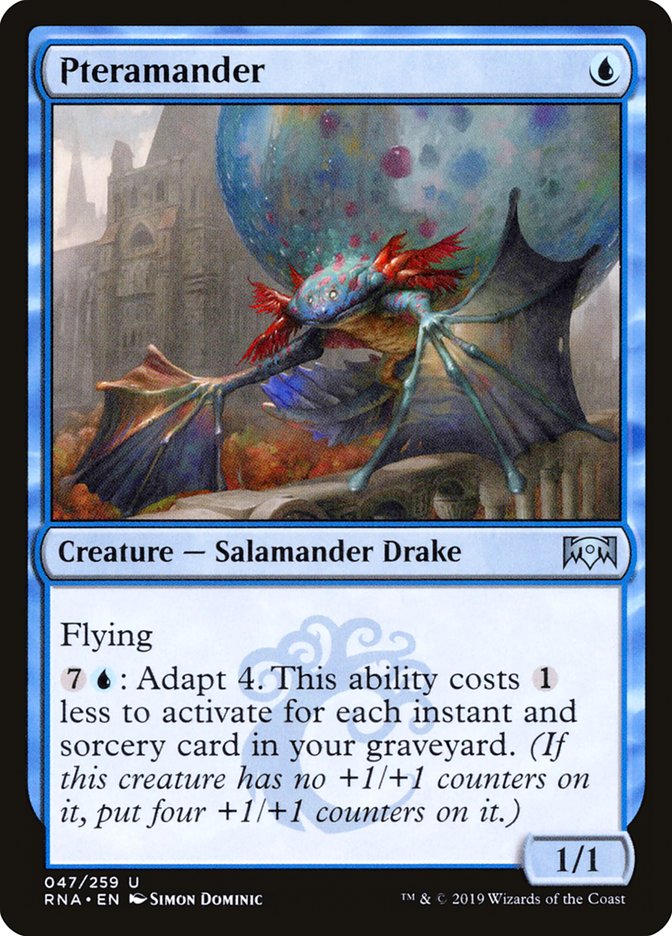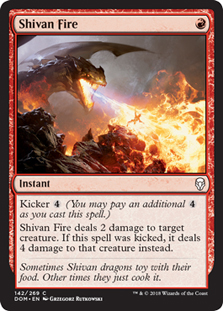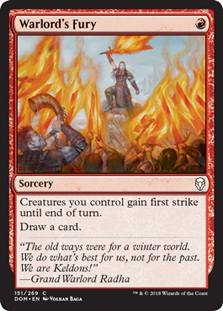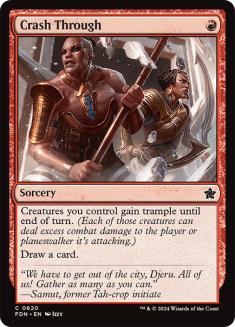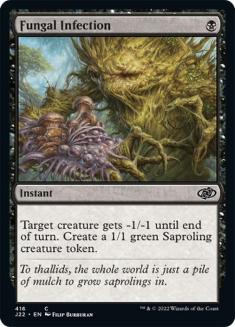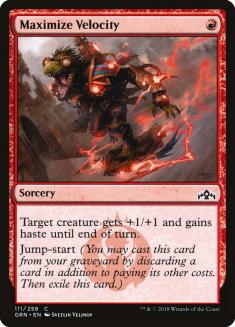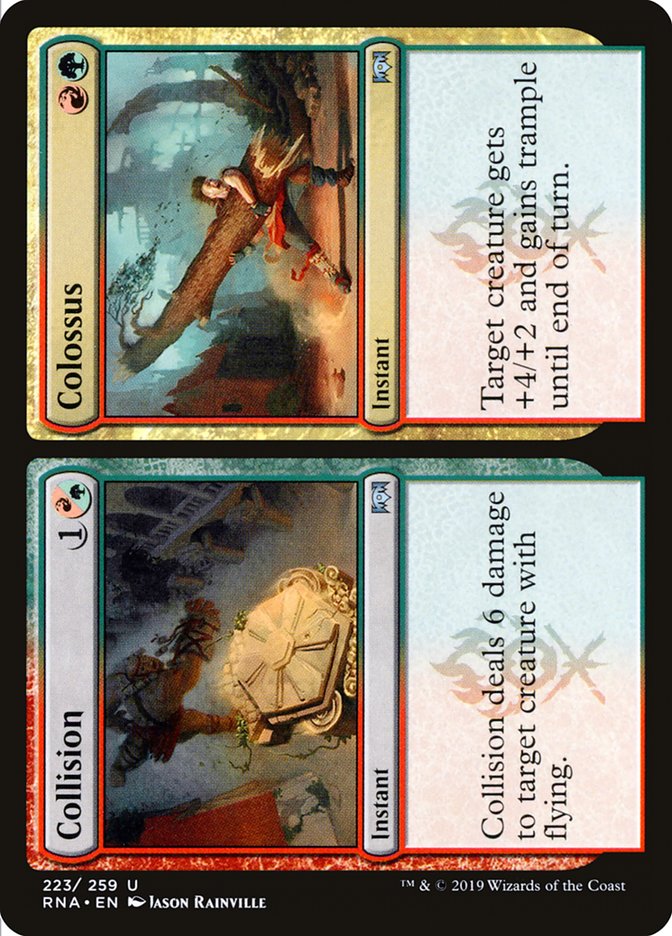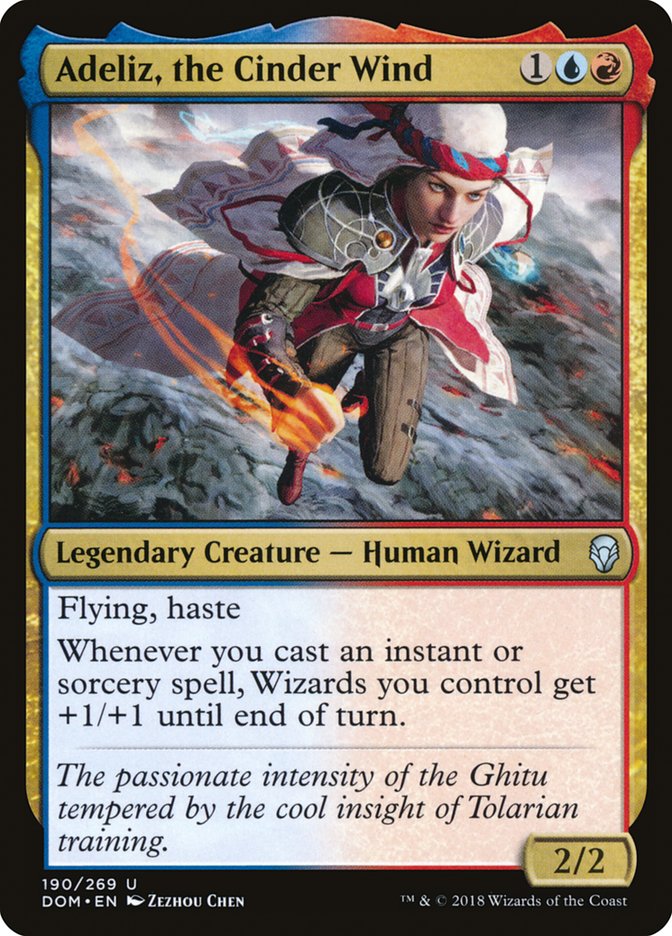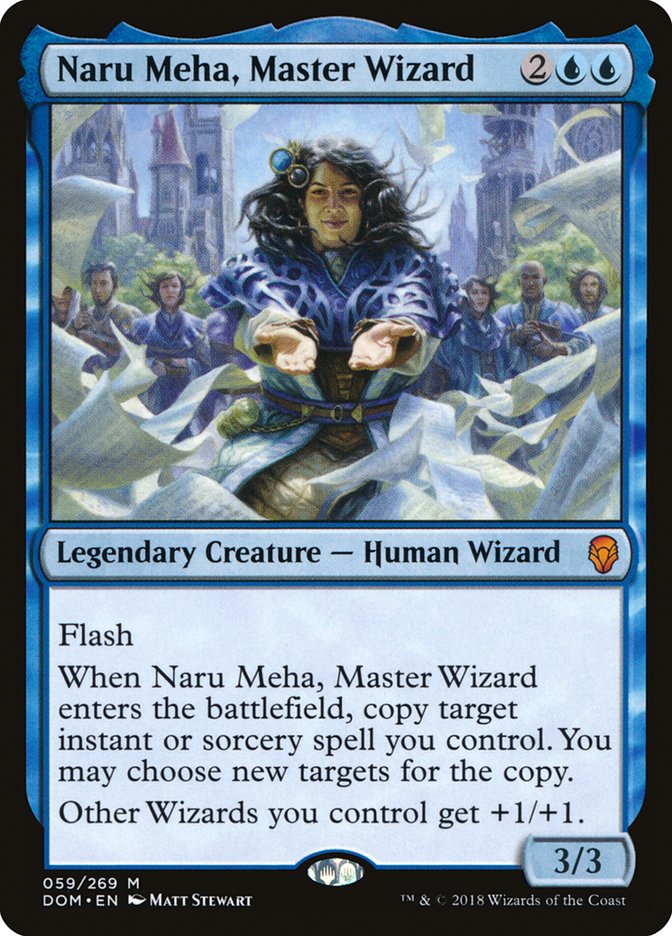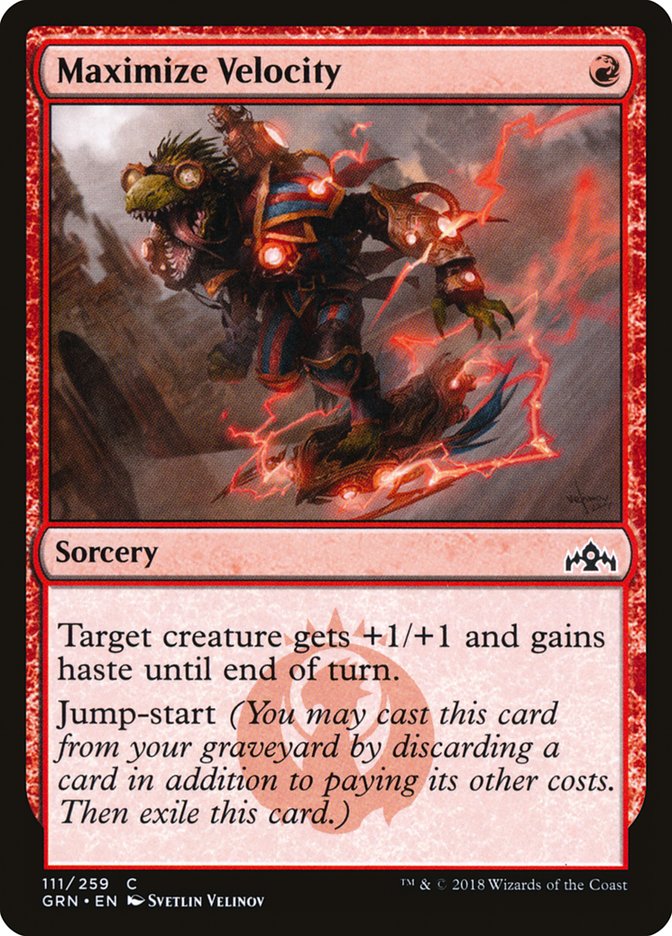I’m a sucker for every mediocre modified Snapcaster Mage that’s been printed in the past seven years. My curious obsession would go back even further, but Snapcaster itself set the bar for “type of card I’ll force into every deck.” Knowing this, it probably comes as no surprise that I scrambled to secure the slot to write about Dreadhorde Arcanist.
The Legacy applications for Dreadhorde Arcanist might be the most intuitive out of the three formats I’ll touch on todaym so I’ll start therem since I plan to use most of this article to go really deep on its Standard and Modern applications.
Legacy
Rich Cali’s winning deck from SCG Syracuse is the most intuitive landing spot in Legacy for a cheap creature that cares about spells. At first glance, it seems easy enough to toss a few copies in there, start flashing back Lightning Bolts, Brainstorms, and Ponders and call it synergy. I caution, however, that it might not be that easy. It very well could be, but let’s take a look at the costs of doing so.
Creatures (14)
Lands (18)
Spells (28)

The mana cost of Dreadhorde Arcanist is two, so any one- or zero-mana spells you cast are free This makes the card cheaper than Snapcaster Mage on rate most of the time. However, if Dreadhorde Arcanist dies before you can attack or it can’t attack for some reason, you don’t get to cast anything extra. Snapcaster Mage cost one more mana most of the time, but it doesn’t have “suspend 1” built into the ability. Dreadhorde Arcanist essentially does, and you’ll usually have to wait a turn, as most fair decks in Legacy won’t be interested in finding a way to give this thing haste for the express purpose of cheating on one mana. Cali’s deck could already play Snapcaster Mage and elects not to, and in a format as deep as Legacy, almost every card you can play is a better (or worse) version of another card.
While Dreadhorde Arcanist is analogous to both Snapcaster Mage and Jace, Vryn’s Prodigy, both of those cards are blue, whereas this one is red. The fair decks that play red and don’t play blue are Burn, Four-Color Loam, and Mono-Red Prison. An argument could be made for a fringe strategy like Boros Taxes, but that deck plays minimal spells, actively tries to prevent others from casting spells, and often plays maindeck copies of Rest in Peace. So, for the sake of simplicity, let’s assume that the decks that really want to play Dreadhorde Arcanist are all Izzet-based.
Izzet Delver has lots of cheap spells, plays other creatures that can theoretically absorb the removal spells that could kill Arcanist, and often operates on two mana. I think this is the best fit, but Arcanist makes Pteramander worse, and that’s worth evaluating. I’m inclined to believe that cutting a Pteramander or two for a couple of these is fine; you’re slower, but you can rebuy burn spells for added reach. This change doesn’t increase the amount of cards that are affected by the graveyard, so you won’t likely see much graveyard hate after sideboard to randomly render your two-drop useless.
Another benefit of Dreadhorde Arcanist in the context of sideboard games is that it can be reactive and proactive at the same time. It keeps creating card advantage and pushing through incremental damage while giving you redundancy for any cheap spell-based sideboard options you have. In the case of Cali’s deck, options include Pyroblast, Red Elemental Blast, Surgical Extraction, and Forked Bolt. Depending on the context of the format, those options could also include Hydroblast, Blue Elemental Blast, and supplemental copies of something like Vapor Snag.
One-mana artifact removal is usually eschewed in favor of Abrade because one is the default setting for Chalice of the Void. But even with only the aforementioned cards as options, this affords you plenty of luxuries. One other noted benefit over Snapcaster Mage is that this type of deck both plays Wasteland and seeks to operate in such a way that it’s generally immune, or at least minimally vulnerable, to other Wastelands. In terms of Izzet Delver, that means fetching basic Island and basic Mountain and operating fully off those two lands. This play pattern allows you to use a Wasteland on Turn 3 to inhibit your opponent while not being weak to their Wasteland on the following turn. Snapcaster Mage, on the other hand, might require you to fetch a Volcanic Island or the second basic Island.
This seems relatively exhaustive for a card that isn’t even Legacy-legal yet. Let’s get on to Modern.
Modern
This portion of the article was certainly going to be about building some silly Zoo or Temur Prowess deck where you cast Become Immense on Dreadhorde Arcanist and then get to flash it back for free – essentially a Temur Battle Rage that you can front-load on a 1/3 body. This line of thinking got me to Bloodbraid Elf when I was incorrectly considering Noble Hierarch pumping Arcanist so you can cast two-mana spells for free. Bloodbraid Elf reminded me of the old deck that cascaded into Ancestral Vision and I furiously contacted my colleagues and some judge friends to make sure that it works with Arcanist.
Where does deckbuilding take us next? It’s important to remember we need to put Ancestral Vision in the graveyard early in the game. If Faithless Looting dodges the Banned List update once again, we have an obvious synergistic inclusion. Thought Scour is always a viable cantrip and gets even better when you include cards like Gurmag Angler or Arclight Phoenix. Chart a Course is a little weak for Modern but allows you to cast Arcanist on curve and dunk an Ancestral into your graveyard the turn you attack. Best of all, your opponent might not realize what’s about to happen until you’ve drawn a bunch of cards.
When executing the objective of our deck involves drawing a bunch of cards in the early game, we can play several other cards that are essentially card disadvantage to ensure we’re alive and to ensure we aren’t always killing our 1/3 the turn we attack. Lightning Axe allows us to discard our Ancestral Vision and clear the path for Arcanist, and I think it’s a natural inclusion for a deck with almost exclusively damage-based removal and would generally struggle with large creatures. We are, of course, including the standard fare for a Modern Izzet deck in Serum Visions, Lightning Bolt, Opt, and so forth. An Izzet deck containing all these cards is pretty easy to envision and essentially builds itself. The question I’m really interested in answering is whether we can combine the Become Immense strategy I was alluding to earlier with the Ancestral Vision / Dreadhorde Arcanist combo.
Creatures (15)
Lands (18)
Spells (27)

Standard
Standard is much smaller than the non-rotating formats we’ve previously discussed. Different things matter when the card pool is relatively small and, consequently, the variables you must consider when evaluating cards are vastly different.
The area where this is most apparent is cohesion. Decks in Modern and Legacy capitalize on synergies cherry-picked from years’ worth of viable designs and run like well-oiled machines. Standard decks, even the best ones, are often piles of good cards. This distinction is important because it heavily informs our evaluation of Dreadhorde Arcanist. This general idea that contemporary Standard decks are often non-synergistic piles of good rares and mythics leads to two important branches of thought when considering this card in context.
1. Standard decks aren’t likely to include a huge number of one-mana spells. This is true for two reasons. First, there are significant diminishing returns on one-mana spells, especially removal, in a format where people still play huge four- and five-mana creatures. Shivan Fire having kicker mitigates this slightly and it’s not as bad of a topdeck as Shock would be because it can kill something larger in the mid-game. Second, there really aren’t that many one-mana spells in the format. When you narrow things down to one-mana spells that can be played in your maindeck comfortably, the list gets even shorter:
As I mentioned in the Legacy portion, one major upside of Dreadhorde Arcanist is that it gives you redundancy and flexibility with your cheap sideboard options like Demystify, Duress, and Dual Shot. While narrow, these sideboard cards are generally pretty good when you’re bringing them in for the matchups where they shine, and it’s nice to be able to cast some high-impact cheap spells twice without further diluting your general strategy.
2. Pumping your two-mana creature as a primary focus of your Standard deck has historically not been a great strategy. This is true because most fair Standard decks are both threat-dense and removal-dense. In cases where the former isn’t true the latter is almost comically true (see: Esper Control). To the same end, when a deck has almost no removal, it’s either attacking on some totally alternative axis like Simic Nexus or playing absurdly large creatures like Steel Leaf Champion and Ghalta, Primal Hunger in Mono-Green Aggro.
This may seem like obscure theory, but it’s important when considering Dreadhorde Arcanist, because if the spell suite you employ cannot both interact with their things and push your own advantage, you’re not doing nearly enough. In a hypothetical Izzet or base Izzet deck, Opt, Shock, and Shivan Fire provide a great foundation so that Arcanist is not just a 1/3 for two mana. They provide an advantage and interaction and thus check the first boxes on the road towards viability. However, if you’re only casting Opts and Shocks, you’re going to ultimately get outclassed. This is where the idea of pumping Arcanist comes in, and there are plenty of cards to do so.
Collision // Colossus is particularly interesting because it gives you a removal option and a pump option on the same card. Provided that you use Colossus before attacks, you can use either of them again after attacking. The current Gruul Aggro decks play multiple copies of the powerful split card and also play one-mana removal spells like Shock and Shivan Fire, so Gruul Aggro strikes me as a great fit for Dreadhorde Arcanist. Collision // Colossus is also a great example of a pump spell that isn’t too narrow, since it has other applications outside of only working with Arcanist. It’s important to consider this because the wealth of removal in the format usually means that dedicating multiple slots in your deck to pump spells is a losing proposition.
One way to circumvent this is to play pump spells that pump the creature as an afterthought. By that I mean playing cards that increase Arcanist’s power while also managing to do other things. Three of the other four cards on this list do things other than simply increasing power and are rock-solid partners for Dreadhorde Arcanist on a theoretical level. Each is good against removal and several of the cards are proactive in their own right. Naru Meha, Master Wizard and Adeliz, the Cinder Wind make Dreadhorde Arcanist better, but I also think Dreadhorde Arcanist makes them a bit better too!
Provided that you have Adeliz and Dreadhorde Arcanist on the battlefield together, any card you flash back off Arcanist will give all your Wizards another boost per Adeliz. Naru Meha doesn’t do much itself besides having flash and pumping all your Wizards, but as a 3/3 for four mana, that’s not an awful stat line, and these two legendary Wizards could be the basis for a new Izzet deck (though they would need a little bit more support from War of the Spark).
Maximize Velocity is the other easy, obvious card to pair with Dreadhorde Arcanist. Already having seen play in several iterations of Izzet Drakes and Izzet Phoenix since its printing in October, Maximize Velocity is a tricky, high-impact card that’s fallen out of favor recently. One of the best ways to use Maximize Velocity with Dreadhorde Arcanist is holding both until Turn 3, allowing you to recast whatever spell you cast on Turn 2 (perhaps a Lava Coil or Chart a Course). This is far from broken, but it’s a nice way to get value, and it’s also easier to find something to discard to jump-start when you can get extra value from a bunch of your removal spells like Lava Coil.
The last card we’ll look at is the last one most people would’ve thought about in tandem with a red two-mana 1/3. Hadana’s Climb is considered a relic of the Winding Constrictor– and Bristling Hydra-filled past. It has seen some sporadic play with Growth-Chamber Guardian in Ravnica Allegiance Standard, but the card has been mostly quiet since Kaladesh left us. I imagine the deck containing both this card and Dreadhorde Arcanist would be tough to theorycraft, but that won’t stop me from trying.
Hadana’s Climb is intriguing from a deckbuilding perspective because it pumps things without opening you up to getting two-for-one’d by removal. It’s also a nice sort of inevitability that will grind your opponent down, provided you have enough threats to do so, and if you can keep supplying creatures, Hadana’s Climb will make them individually threatening if they weren’t already.
I think I’m ready to go off the deep end with Hadana’s Climb and Dreadhorde Arcanist, so it’s probably a great time to call things quits for today. That said, I’m excited to get to work with Dreadhorde Arcanist in three different formats, and that’s something you can’t say about most cards during this War of the Spark preview season.



